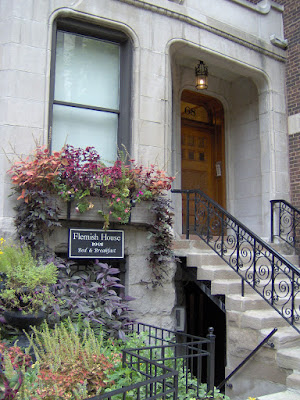Spring is in the air. Anyone who has spring allergies has known that for quite a while. It makes millions of us miserable. Allergies are your body's way of telling you that it doesn't like a foreign object that you have introduced it to. Suddenly your eyes are itchy or drippy or both, your nose stuffs up or runs. It isn't a pretty sight. When it comes to treating spring allergies, you need to know what type they are.
Basically, there are three types of allergens; contact, food and inhaled. Of these, the most common are those that you inhale and these include pollen, pet dander, mold, and dust. The most common food allergies include milk, eggs, wheat, shellfish, fish, peanuts, tree nuts, soy, chocolates, and strawberries. Contact allergies usually result in an itchy rash, the most common are nickel, fragrance, poison ivy, latex, and lanolin.
Before you think about natural cures you need to try to make your environments as much of an allergen free zone as possible. Dust mites are tiny but they leave behind, get ready to be grossed out, fecal matter and dead mites in the carpet, pillows, and furniture in your home. Pollen comes blowing in the doors and the windows and your favorite pets are dropping their dander everywhere. It's no wonder you are sneezing coughing and scratching.
Can you say HEPA? Now that you have said it, make sure that your vacuum has one. This is the first step in making your home an allergen-free zone. You also need to close those windows and use air conditioning. The final step is adding air filtration systems again with a HEPA filter if possible. If this doesn't solve the problem you may need to remove the carpeting in your home and cover your bedding in plastic. If mold is a problem then a dehumidifier is a must, you need to dry out the environment.
Unfortunately even if your house is an oasis eventually you have to go out. You will then have to treat the symptoms.
Honey
One of the easiest homeopathic remedies to counteract allergies is to eat at least a tablespoon of locally grown honey every day. It can have some very positive results. The trick is to make sure that the honey is being produced within 40 miles of where you live, this way the bees will have transferred the same pollen to which you have been exposed. It is a case of the hair of the dog; if you are exposed to the allergens, your body will gradually become tolerant of them. While there is no science to back this up, several of my friends have had good results so it can’t hurt to put some local honey in your tea or on your toast.
Quercetin
According to research at the
University of Maryland Medical Center, “In test tubes, quercetin prevents immune cells from releasing histamines, chemicals that cause allergic reactions. On that basis, researchers think that quercetin may help reduce symptoms of allergies, including a runny nose, watery eyes, hives, and swelling of the face and lips. However, there is no evidence yet that it works in humans.”
Other experts agree. David C. Leopold MD, director of Integrative Medical Education at the Scripps Center for Integrative Medicine in San Diego, says “some people are able to manage their allergies with natural allergy remedies alone, while others use them as a complement to drugs.
I think quercetin is pretty effective and well tolerated,” says Leopold. “It seems to work well for prevention.” However, while lab tests of quercetin are intriguing, we don’t yet have good research for how well it works as a treatment in people.”
“Finding a good supplement for allergies can be a challenge,” says David Rakel, MD, founder, and director of the University of Wisconsin Integrative Medicine Program. “Honestly, the pharmaceuticals often work a little better. But there are some out there that can help.”
Butterbur
“Butterbur is the Singulair of the herbal world,” says Rakel. “I think of all the allergy supplements, it has the best evidence behind it.” The herb appears to work as a leukotriene inhibitor, which blocks some chemicals that trigger swelling in the nasal passages.
According to
WebMD, some research shows that an extract of butterbur root (Ze 339) are just as effective at relieving nasal symptoms as antihistamines like Zyrtec and Allegra. Butterbur has the advantage of not causing sleepiness, a common side effect of antihistamines, even some so-called “non-sedating antihistamines.” “For someone who is driving a car or flying a plane and really needs to avoid the sedative effects of an allergy medication, butterbur is a good alternative,” Rakel says.
Some of the issues with herbal remedies involve allergic reactions. Many of the plants which are used are related to ragweed and those with allergies to ragweed may find them more irritating than helpful. “I’ve seen people who come into our offices because their ragweed allergies are being aggravated by their allergy supplements,” says Rakel. “Usually, the first thing we do is get them off all the stuff they’re using. The human body doesn’t generally need a handful of supplements every day to stay well.”
Nasal irrigation
It might seem odd, but there’s good evidence that flushing out the nasal passages with salt water can help allergy symptoms. Some use simple neti pots and others more elaborate devices. “I think more Americans need to get used to nasal irrigation,” says Leopold. “It’s very effective and it makes clear sense. You’re flushing away the things that are irritating your nasal membranes.”
As you can see, there are some alternatives to pharmaceuticals when it comes to treating spring allergies. Most research seems to indicate that a combination of products both medical and herbal may give the best results for most people. It may be that the best way is to combine preventative and treatments and see what will give the best relief.






